|
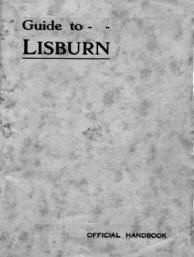
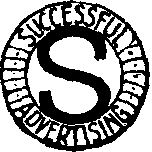
Printed and Published by
THE SIMMATH PRESS
(Branch of Valentine & Sons, Ltd., Fine Art Publishers)
DUNDEE
circa 1918
LISBURN
POPULATION : 13,388 (last census, 1911.)
POST OFFICE, Railway Street: Postmaster, Mr. J. Shanks.
SUB-POST OFFICE: Bow Street, Miss Anderson.
SAVINGS BANK AND TELEGRAPH OFFICE: Railway Street.
HALF HOLIDAY: Wednesdays.
FAIR DAYS : Second Monday in month.
PETTY SESSIONS COURT : meets on alternate Thursdays at
11-1.5 a.m.
CLERK OF PETTY SESSIONS Mr. T. J. English.
URBAN DISTRICT COUNCIL: Meets on first Monday in each
month at 7-30 p.m. CHAIRMAN: Mr. Thomas Sinclair, J.P. ;
TOWN CLERK; Mr. T. M. Wilson.
TOWN SURVEYOR: Mr. S. W. Farrington, B.E.
RATE COLLECTOR: Capt. W. E. Coulter, M.C.
CLERK OF MARKETS: Mr. Robert McWright.
CAPTAIN OF FIRE BRIGADE: Mr. Wm. Megran.
MANAGER OF GAS WORKS: Mr. A. S. Brook.
STATIONMASTER, G. N. R. : Mr. John Alister.
MUNICIPAL TECHNICAL SCHOOL: Mr. Cecil Webb (Principal)
CLERK OF UNION AND SUPERINTENDENT REGISTRAR
OF BIRTHS, MARRIAGES AND DEATHS: Mr. S. Crail.
BOARD OF GUARDIAN-s: meets on alternate Tuesdays at 12 noon.
DISTRICT HOSPITAL : Surgeon; Dr. H. S. Murphy.
COUNTY ANTRIM INFIRMARY: Surgeon; Dr. Johnston.
PLACES OF WORSHIP.
CHURCH OF IRELAND : The Cathedral ; Rev. J. S. Taylor, M.A. ;
Christ Church ; Rev. R. H. S. Cooper, M.A.
PRESBYTERIAN; Market Square ; Rev. J.J.C. Brakey, B. A.
Railway Street; Rev. Dr. R. W. Hamilton;
Sloan Street; Rev. Jas. Morrow, B.A.
METHODIST CHURCH: Rev. R. S. Lyons, B.A.
ROMAN CATHOLIC CHURCH : Very Rev. Canon O'Boyle, P.P.

PUBLIC INSTITUTIONS.
BANKS: Northern Banking Co. ; Wm. Young,
manager;
Ulster Bank ; Thos. Malcomson, manager ; Belfast Bank ; John
A. Cook, manager.
R.U.C. BARRACKS ; County Inspector Britten, District Inspector
Anderson and Head-Constable Goold.
THOMSON MEMORIAL HOME FOR INCURABLES; Miss
Jones, Lady Superintendent.
SCHOOLS : University and Intermediate School
(Mr. Hugh Maybin) ; Infant School, Longstone Street (Miss
Wilson)National School, Market Square (Mr. J. Fletcher).
National School, Seymour Street, (Mr. F. O'Kane).
National School, Wallace Avenue, (Mr. J. Boyd).
National School, Chapel Hill, (Mr. J. Fitzpatrick).
National School, Hilden (Mr. R. M. Forsythe).
National School, Largymore, (Mr. J. Forsythe).
Friends' School, Boarding and Day, (Mr. C. F. Spencer Smith).
Nicholson Memorial School; (Mr. J. Smyth, B.A.).
LISBURN GOLF CLUB; Mr. W. E. Coulter, Hon. Secy.
LISBURN NEWS Room: Mr. R. Greene, Hon. Secy.
TEMPERANCE INSTITUTE: Railway Street.
PRINCIPAL STREETS: Business; Railway Street, Market Square,
Bow Street, Chapel Hill, Bridge Street, Seymour Street,
Smithfield, Castle Street, Longstone Street.
Residential ; Antrim Road, North Circular Road, Belsize Road,
Belfast Road, Dublin Road, Bachelor's Walk, Magheraleave Road.
MEDICAL DOCTORS: Dr. Mackenzie, Dr. Johnston, Dr. Campbell,
Dr. Peate, Dr. Murphy, Dr. Sinclair, Dr. Kean. PRINCIPAL
INDUSTRIES: Manufacture of Linens and Linen Threads, (Three
Mills and eight factories) ; Furniture making, (Two
factories).
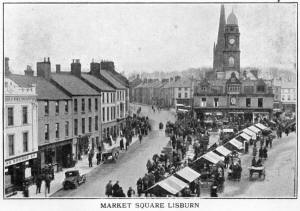
It is indeed very difficult to give a short
history of any Irish town, without touching on that tragedy of
tragedies -Civil War. Throughout the ages, Erin has been
divided within itself, and while we are not concerned here
with political, economic or religious reasons for the
continual strife in that isle, still we cannot ignore the
fact, unpleasant though it be, and we give in the following
pages a brief summary of the development and situation of
Lisburn, taking a most neutral stand with regard to the
quarrels and subsequent appeals to the law of force.
Situated on the river Lagan, the town of Lisburn-at one time
known as Lisnagarvagh--is of ancient origin, and before the
reign of Queen Elizabeth was but a small village. At one time
it was one of the fastnesses of Hugh MacNeil Oge, son of Neil
Oge O'Neil, a Prince of Tirowen. The name is derived from
Lis-na-garvoch (the fort of the gamester) a circular path on
the north side of the Wallace Park. In the neighbourhood
several of these may be seen, and historians are agreed that
these were surrounded by deep ditches, or moats - and the
whole enclosed with strong palisades, a high rampart of earth
and wood, well flanked with bulwarks. Three of these may be
visited in Ireland-one on the Clogher Hills, Co. Down ; one at
Todd's Grove and one on the White Mountains. These were used
in order to establish communication between one another in
case of attack, by means of beacons being lighted, and in
order to fulfil this purpose were placed on a high part of the
country ; most certainly they are the remains of strongholds
and dwelling places of the Celtic chieftains. These were used
up to the year 1600. Previous to 432 when St. Patrick
introduced Christianity into Ireland, Druidic was the
prevailing religion, and a cromlech--an altar for human
sacrifices --can be seen at the Giant's Ring, Ballylesson, Co.
Down.

Relations between the Government of England and the native
Princes of Ulster were very strained during the reign of Queen
Elizabeth, at which period the. O'Neills were very powerful
and had a large following in the northern province. When.
years of warfare had proved fruitless, the Queen resorted to a
certain form of diplomacy which did not achieve the desired
result. Shane O'Neill, was offered an earldom, and in scorning
any such favour from Her Majesty's hand, replied that by blood
and birth his rank was far above a peerage. " My ancestors
were Kings in Ulster," he added, `they gained their power by
the sword, and I shall uphold my rights by the same weapon."
When Sir Henry Sidney-the Queen's Irish Deputy attended by an
armed bodyguard of mounted soldiers, made his tour of Ulster
in the autumn of 1585, visiting the leading Princes there, he
was most anxious to make friends with the Captain of
Killultagh then holding great sway and haying an influential
position of that powerful Sept ; his domains covered a large
territory and he was lord of three castles, all being
encompassed by forts of great strength. One of these built on
a mound above the River Lagan, close to Lisnagarvey, commanded
the entrance from the County Down side, and was in a fine
position to thus act as a refuge from all invasions coming
from that part.
Sir Henry, however, for some reason or other did nor act in a
manner, likely to thaw the Captain of Killultagh, and waited
outside the rampart, seated on his horse. One of his officers
then called on the Captain announcing his --the Irish
Lord-Deputy--arrival and that he desired to speak to the
Captain. The Captain, however, viewed the advent of the
English as invaders of his country, and the conduct of Sir
Henry merely served to inflame his anger. He scorned the idea
of waiting on the Deputy and sent back the message " If the
English Deputy wishes to pay his respects to me, I will be
happy to see him inside these walls." This in turn so vexed
his Lordship that in his report to the English Cabinet he
says, " I came to Killiltagh, which I found ryche and
plentyfulle after ye manner of those countryes, but ye Captain
was proud and insolent; he would not leave his castle to see
me, nor had I apt reason to vysyte him as I would. He shall be
paid for this before long. I will not remain long in his
debt." This treatment to her deputy so enraged Queen Elizabeth
that orders were given to these commanders that neither men
nor money counted, so long as the power of the O'Neills and
their friends was smashed. So commenced the strife, until in
1587, Brian McArt O'Neill and his father the Captain of
Hillultagh, after many overtures and full pardon was promised,
accepted the English Rule. In her Majesty's name, Sir John
Penot accepted the pledge, but on hearing that a kinsman of
theirs had gathered an army against the English, the Captain
and his sons, joined that expedition and cancelled their
previous promise. Once again there was strife, and battle, and
death; once again mothers mourned for their sons, and wives
for their husbands. In the year 1602, Lord Mountjoy was
commanding the English forces, and his troops took possession
of that stronghold of the O'Neills, the Fort of Ennisloghlin.
It was bravely defended, and after enduring the most gruesome
horror of devouring their fellow defenders, the army
surrendered, and O'Neill submitted to the Queen's commander. A
full pardon was granted, and with slight reservations, O'Neill
was granted a new patent for his lands. The news of the death
of Queen Elizabeth was made known at the first Council in
Dublin that O'Neill attended after his surrender, and when he
was received according to his rank. On being informed of the
death he burst into tears, on the plea that " he was unable to
contain his grief at the loss of a mistress whose moderation
and clemency had at length caused him to regard as a generous
benefactress." There were many who disbelieved him, thinking
he was bitterly accusing himself, for his lack of courage in
not holding out for a few more days when he might have
commanded better terms. The right reason we may never know,
but most certainly the power of the O'Neills, Earls of Tirowen,
Captains of Killultagh and the Lords of Lisnagarvagh, vanished
in the company of the life of Queen Elizabeth.
The lands of the O'Neills however were by letters patent sold
to Sir James Hamilton in 1604, who transferred them by the
same means to Sir Fulke Conway of Conway Castle, Wales, in
1609. Under his ownership the town flourished and Castle
Street, Bow Street, and Budge Street in their present form
laid down. Sir Fulke encouraged both English and Welsh to
settle there, and many took up their residence.
The Cathedral was opened for Divine Service in 1623 during
James the First's reign, when it was known as the Church of
St. Thomas, then Christ Church in 1662, and it was during the
reign of Charles the Second that it was raised to the Dignity
of a Cathedral for the diocese of Down and Connor. Lord Conway
in 1627 built a castle on a hill which commands a lovely view
of the valley of Lagan, a portion of which that formed the
entrance-may still be seen. An author writes regarding this
;-- " From Belfast to Linsley Garvin is but seven miles and
appears a paradise compared with any part of Scotland. Linsley
Garvin is well seated but neither the towne nor the country
there about is well planted, being almost woods and moors
until you come to Dromnore. The towne belongs to my Lord
Conway, who hath there a hainsome Castle, but far short of
Lord Chichester's houses. Lord Conway's garden and orchard are
planted on the side of the hill on which his house is
situated, at the bottom of which runneth a pleasant river, the
Lagan, which abounds with salmon."
In the year 1641, when the Irish rose in rebellion against the
English Lisburn was beseiged by the nationalists on November
28th. Owing, no doubt, to the fact that a great many of the
inhabitants were of English and Welsh descent, the town of
Lisburn was always most loyal to the English "throne. The
records of the Cathedral-then a Chapel of Ease for English
troops,-contain the following account of that time.

" Sir Phelim O'Neill and Sir Conn Magenis, the insurgent
Generals then in Ulster, and Major General Plunkett, having
enlisted and drawn together out of the Counties of Armagh,
Tyrone, Antrim and Down, eight or ten thousand men, which were
formed into eight regiments and a troop of horse and two field
pieces did rendezvous on the 27th November 1641 at a house of
Sir George Rawdon, at Brookhill, three miles from Lisburn, in
which town they knew there was a garrison of five companies
and Lord Conway's troop of horse. They made their attack in
three divisions, at the end of Castle Street, Bow Street and
Bridge Street. More than two hundred of the insurgents were
slain in Bridge Street and three hundred in Castle Street, and
in the meadows behind the houses, whereby they were so much
discouraged that for almost two hours their officers could not
get any more parties to adventure a second assault upon us,
but in the main space, they entertained us with continued fire
from their body and their field-pieces till about one o'clock,
when fresh parties were issued out, and beaten back as before,
which they supplied with others till dark, when they fired the
town, which was in a few hours burned to ashes. The slain of
the enemy, were found to be more than thrice the number of
those who fought against them. Their two Generals quit their
station; their two field pieces were thrown into the river or
in some moss pit and could never be found, and in their
retreat or rather flight, they fired Brookhill House and the
Lord Conway Library in it, and other goods to the value of
five thousand pounds. All our horse, which did most execution,
were not above 120, viz :- Lord Conway's troop, and a squadron
of Lord Grandisons troop. We got about fifty of. their colours
and drums.
And they were so enraged at this defeat that they murdered
many hundreds of Protestants whom they had kept prisoners in
the counties of Armagh, Tyrone, etc." A piper at this siege
had his head blown off, and rolled down the hill, which is now
known as Piper Hill. Until Cromwell with his forces destroyed
Ireland's independence as a separate nation, that isle was the
scene of much bloodshed and battle. Royalist, Parliamentarian,
and the native Irish each and all, rose as an armed force to
secure the rule of Ireland-then came Cromwell and Ireland was
conquered. During this horrible trial, which Ireland
underwent, Lisburn was the .scene of many battles, and time,
with her ever patient hand, has smoothed the scars and healed
the wounds.
But let us turn to more pleasant aspects of the growth
development and history of Lisburn.
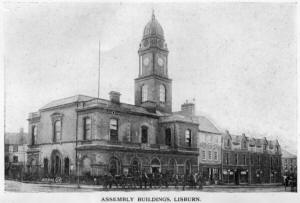
Stratford-on-Avon will for ever be linked with the name of
Shakespeare, and the town of Lisburn may well be said to be
the Stratford-on Avon to that famous Bishop-Author, Jeremy
Taylor. Born in 1613 at that seat of learning, Cambridge, he
attended the University there, and took holy orders, after
which the famous Archbishop Laud appointed him one, of his
chaplains. Thus early he was thrown on the Royalist side, and
Charles the First and he formed a very close friendship. At
the close of the Civil War in England, when the King's cause
was shattered, Taylor received from his King, a watch as a
momento. Lord Carberry of Wales offered Taylor a home during
the period which elapsed between the War and the Restoration.
It was in Wales that we find Taylor produced most of his
works, but in 1657 he was imprisoned in the Tower of London.
Released in 1658, Lord Conway conveyed him to Lisburn, where
he held a lectureship.
.- But fate was kind to that sore persecuted man. When he
visited London in 1660 to publish his " Doctor Dubitantium,"
he had the supreme satisfaction on the 29th May of that year
of being one of the many who witnessed the triumphant entry of
Charles the Second in the capital of England, from which date
his fortune changed. Lord Conway used his
influence with Charles the Second, and Taylor was appointed
Bishop of Down and Connor, to which was added the
administration of the See of Dromore. The Bishop had been in
residence at Portmore, and at Magheraleave, Lord Conway fitted
up a most charming house for his comfort. Here it was that the
prelate wrote some of his later works. The. cottage and the
study still can be seen, and here the visitor may share in the
beauty, peace and rural surroundings, which the late Bishop
delighted in. Alas! the evening of his days were somewhat
disturbed by the subject of conformity, and his pursuits in
literature were checked. Contracting a fever while visiting, a
stricken parishioner he passed to his rest on 13th August,
1667, and was interred in Dromore Cathedral's chancel, Bishop
Mant erected in his memory a marble slab with a suitable
inscription in Lisburn Cathedral. Lisburn. may well be proud
of her associations with the author of such gems of literature
as " The Liberty of Prophesying," Holy Living," " Holy Dying,"
and " The Great Exemplar."

The town in common with the rest of Great Britain was affected
by the political events which took place from the restoration
of Charles the Second in 1660, till the death of William the
Third (1702.) Cromwell never really subdued the inhabitants,
who refused willing obedience to the Protector, and as a mark
of esteem to his father and himself, King Charles on his
restoration gave the town the right to elect two
representatives to the Irish Parliament and as already stated
raised the Church to the dignity of a Cathedral.
In 1685, when Louis the Fourteenth of France revoked the Act
of Toleration, the Protestants or Hugenots, were forced to
flee France, and make their abode in foreign lands. Many in
their flight settled in Ireland, of whom the majority made
Lisburn and the neighbourhood their home. In their native land
of France, some of the refugees had followed the trade of
linen or silk manufacture, and when on reaching the shores of
Ireland, they naturally continued in following their
particular bent, thus bringing a new idea of this industry
into their adopted land, for Lisburn had already found
employment in the cultivation of flax and manufacture of
linen, although little or no progress had been made in these
arts. The government encouraged the industry by gifting money
for the erection of suitable factories for this manufacture.
Once more we must make reference to that demon which has
always been uppermost in Ireland ; that demon which has torn
Ireland asunder time and again ; set house against house ;
father against son ; the fearsome, horrible and ruthless
demon-War. James II. assumed the throne in February 1685,
which he held but for four years, during which, war was
playing havoc in Ireland. In command of 10,000 men, the Duke
of Schomberg landed at Groomsport, made Lisburn his
headquarters, where for six months he resided in the house
previously occupied by Bishop Jeromy Taylor. The dawn of a new
era was at hand. The news was spread by means of bonfires on
the mountains of Down and Antrim, on the 14th of June, 1690,
that King William together with his bodyguard and troops had
landed at Carrickfergus, from whence he proceeded to Belfast,
leaving there on the 19th June on his way to Dundalk. His
Majesty stayed a few days in Lisburn, during which time, his
sympathy was evoked on behalf of the Church and he increased
the amount of the Regium Donum to twelve hundred pounds, and
immediately wrote an order for the first year's annuity.
Once the revolution was over and peace for a time prevailed,
the people of Lisubrn applied their minds to the manufacture
of linen, and under the Crommelins, Delacherois, Richardsons,
Barbours and the Coulsons, such progress was made and a high
degree of excellence was reached. Lisburn was destroyed by
fire in 1707, and all that now remains of the ancient city is
the surrounding wall and gateway; on the top of its highest
stone is engraved the date 1677. One of the first houses to be
erected after this calamity, and which is now in the hands of
Messrs. Duncan and Sons, Ltd., has a stone in the front which
bears the following inscription.
J. H. L. 1708.
The year above this house erected
The town was burned ye year before,
People, therein may be directed---
God hath judgments still in store,
And that they do not Him provoke,
To give to them a second stroke.
The builder also doth desire at expiration of his lease,
The landlord living at that time, may think upon the builder's
case.

At the beginning of the 19th century, the
weavers of Lisburn when cutting the ends of their warp yarn
used a most awkward instrument called a " shears," and a
Scotch cutler, one Robert Knox, was instrumental in improving
these, to such an extent that his fame spread throughout the
Kingdom, and before his death he was unable to meet the
demand. Mounted shuttles for use in the linen, trade bearing
the name of " Kelly " were recognised as the best of their
kind, were the invention of a native of Lisburn, of the name
on the shuttle.
Year after year this industry of Lisburn has grown, and it
would serve no purpose here to detail the struggle the steam
pioneers met when they first introduced mechanical power in
their works.
Nor will we enter into any details of more modern history of
Ireland, with its terrible repitition of strife and bloodshed,
but in common with all mankind we do hope that Ireland will
now throw off that hand which must strangle any country's
industry, and ere long she will once more take the place in
the history of the world, which she once so proudly held, when
she was famed throughout Europe as a seat of learning, and the
garden of the Church.
ROBERT STEWART & SONS, LIMITED.
LISBURN, ULSTER, IRELAND.
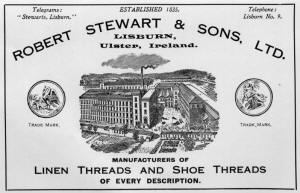
Close to the Railway Station at Lisburn, the Flag Spinning
Mills, and Thread Manufacturing Works of ROBERT STEWART & Sons,
LIMITED, are seen from the trains of the Great Northern
Railway. The works are very conveniently and pleasantly
situated within the town limits, and with workers' houses
etc., cover about ten statute acres. The history of Robert
Stewart & Sons, Limited, as Flag Spinners, Linen and Shoe
Thread Manufacturers, commenced in the year 1835. In that year
the l late Robert Stewart, senior, of Lisburn, began twisting
thread here by hand, and in the course of a few years
afterwards he had about 3,000 spindles at work spinning the
yarn used in the manufacture of the thread. In the year 1845,
Mr. Stewart took into partnership his sons Robert and James
Andrew, from which date the firm traded under the style of
Robert Stewart & Sons. Robert Stewart, senior, died in the
year 1858, but the business was actively continued by the
brothers until the year 1882, when Robert Stewart, junior,
died, leaving his brother James Andrew as the sole proprietor
of the concern. Many extensions had been carried out in the
life-time of Robert Stewart, junior, and the continued growth
of the trade of the firm rendered it necessary a few years
after his death for the surviving partner to erect an entire
new spinning mill, which was completed in the year 1889. This
is a handsome structure, built on the most modern designs, and
fitted throughout with the most approved sanitary
arrangements. The comfort of the workers is ensured by the
installation of the most efficient ventilating arrangements.
The works are lighted throughout by electricity, and employ
almost 600 hands, a large proportion of which are females.
Tailors' threads and shoemakers' threads, both for hand and
machine sewing, are specialities of this firm. In the year
1899 the firm became a Limited Liability Company.

WILLIAM BARBOUR & SONS, LIMITED,
HILDEN, LISBURN, ULSTER, IRELAND.
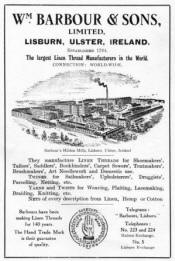
Fame has been brought to Ulster by many of her productions,
and not least by her Linen thread. This industry, introduced
into Ireland in 1784 by Mr. John Barbour, a native of Paisley,
has now grown to large proportions, but it is gratifying that
throughout the hundred and forty years that have elapsed since
Linen thread making was established, one of the principal
firms in the industry, that of Messrs. Wm. Barbour & Sons,
Ltd., Lisburn, has maintained its family association with the
founder. The history of this firm is, in fact, largely the
history of the Linen thread industry in Ulster.
Small mills were erected by Mr. John Barbour at the
Plantation, Lisburn, and young women of the district were
trained in the art of making thread. In 1823, Mr. John Barbour
was succeeded by his two sons, John and William. Dissolving
partnership with his brother, William Barbour removed to the
adjacent village of Hilden and erected works on a site
adjoining the river Lagan. Twelve years later he purchased the
original business at the Plantation and removed the Machinery
to Hilden. Here, with great energy, he developed the business,
extending the works from time to time as demand increased for
his products. When the business subsequently passed to his
four sons, they continued the progressive policy, adding to
the works and maintaining the firm's high reputation.
Becoming a Limited Liability Company in 1883, Messrs. Wm.
Barbour & Sons, Ltd., considerably widened its scope of
operations when, in 1898, it joined with other Irish, Scotch
and English linen thread manufacturing firms, forming The
Linen 'Thread Co. Ltd. Mr. J. Milne Barbour, M.P., D.L., a
descendant of the founder is a director of Wm. Barbour & Sons,
Ltd., also Chairman and Managing Director of the Linen Thread
Co., Ltd., of Glasgow. He is rendering invaluable assistance
in shaping the destiny of Ulster at this momentous stage of
her existence, as a leading member of the Northern Government,
as well as taking a prominent part in the development of a.
number of the largest Industrial and Commercial concerns in
the Province.
In order to retain their markets in the United States, Messrs.
Barbour's erected large works at Paterson, New Jersey, in 1883.
Their overseas branches, in conjunction with the home
factories, give employment to about 5,000 operatives, thereby
entitling the firm to the claim of being the largest Linen
thread manufacturers in the world. A network of agencies has
familiarised every user of linen threads, twines, etc., with
the productions carrying the device of the " Red Hand " with
the word " Flax " across the open palm, which is the Firm's
Trade Mark.
Concern for the welfare of their employees is characteristic
of the firm. Hilden is a model village built by the company
for their operatives, where an admirable primary school has
been erected; and recently there have been provided Hard
Tennis Courts of the most modern type, a Bowling Green, as
well as fully equipped pavilions for the use and comfort of
the members. Everything, in fact, is done to promote the
intellectual and physical welfare of the firm's employees.
 |